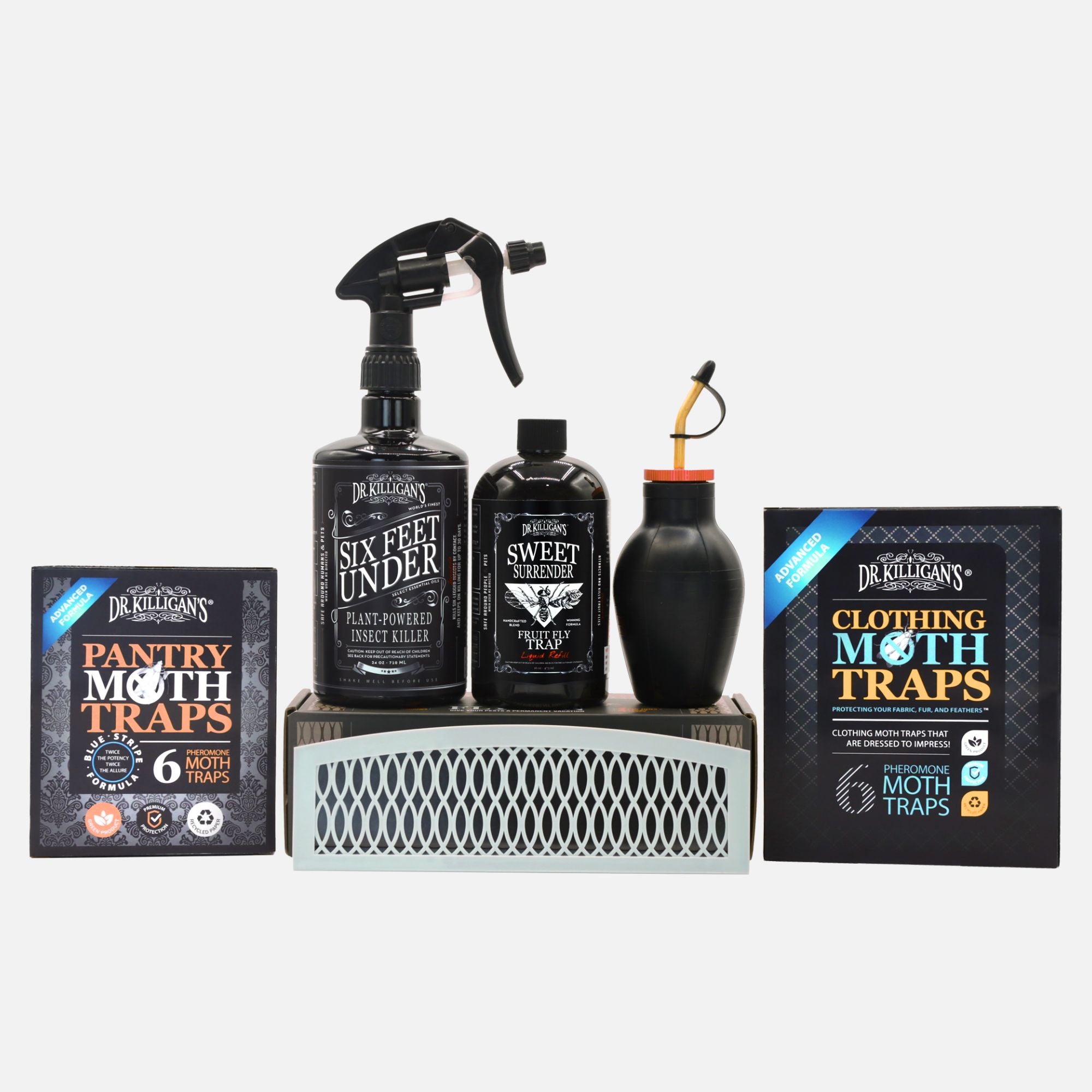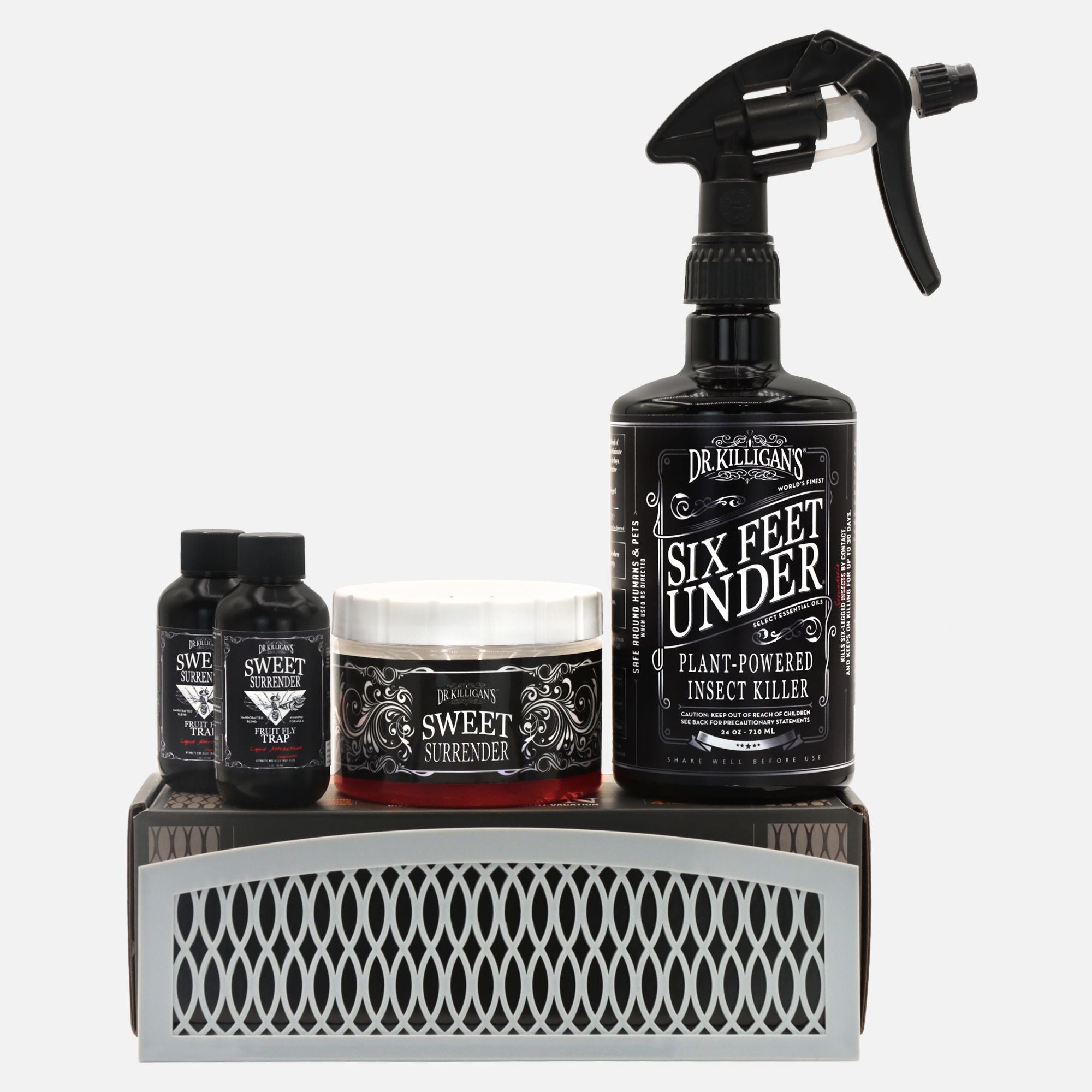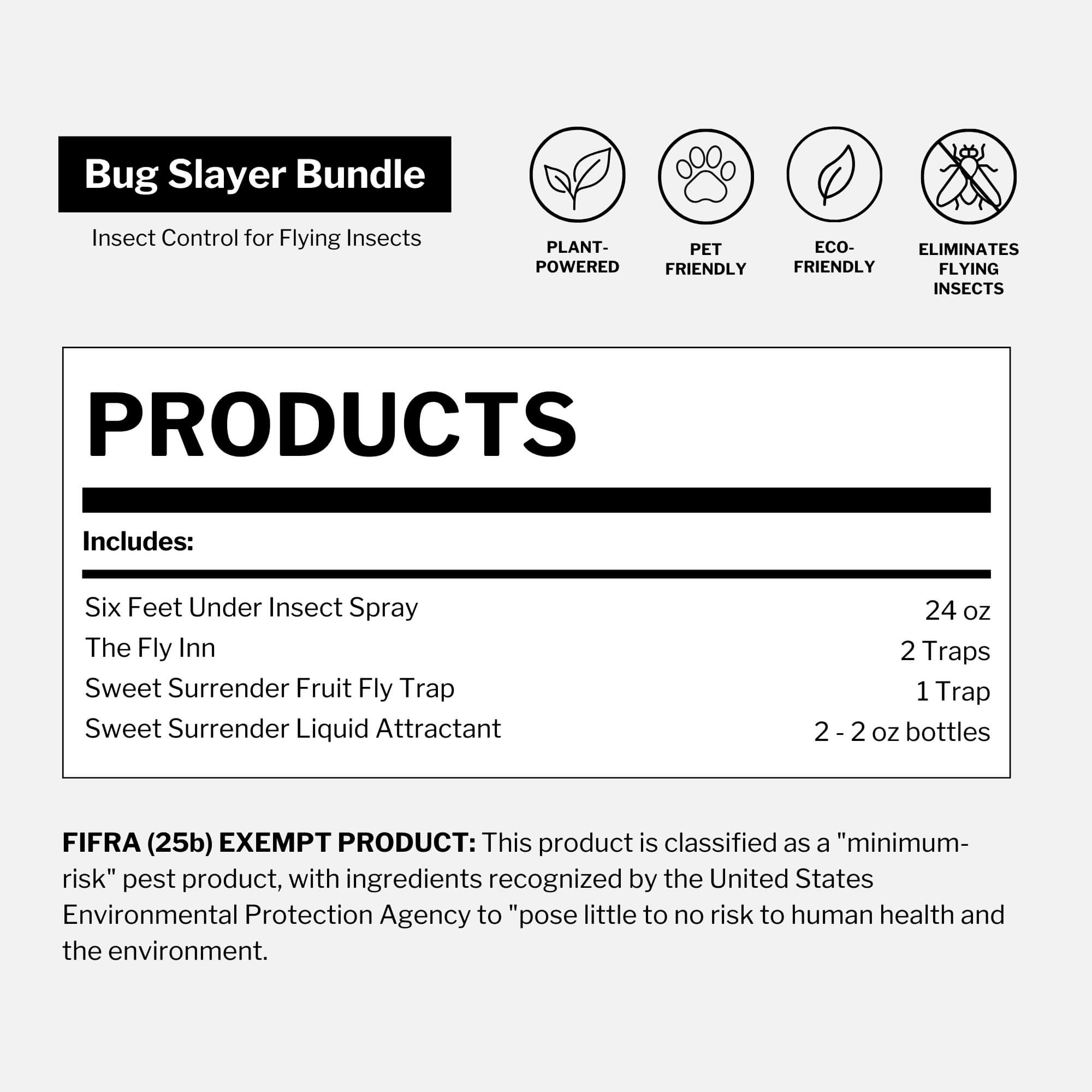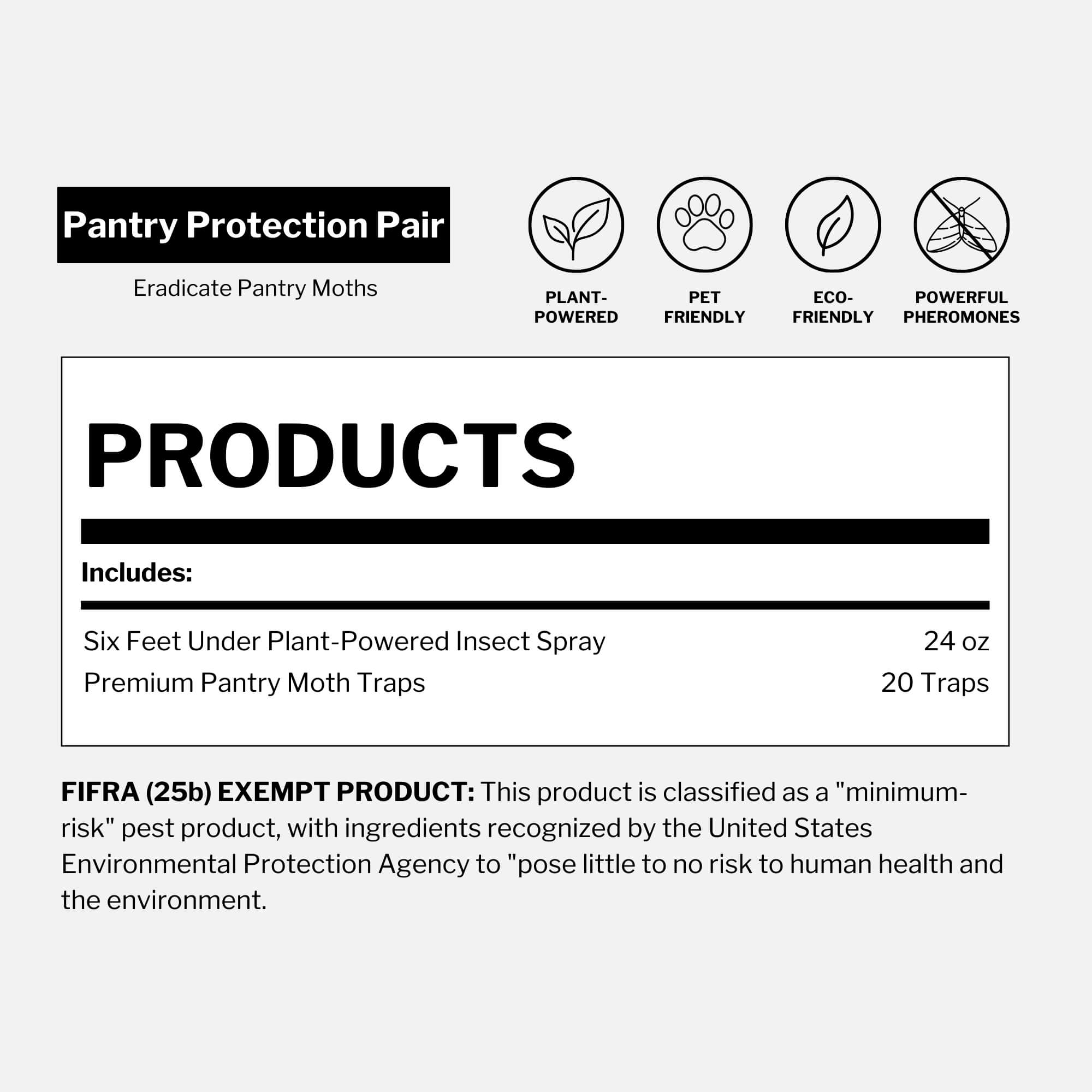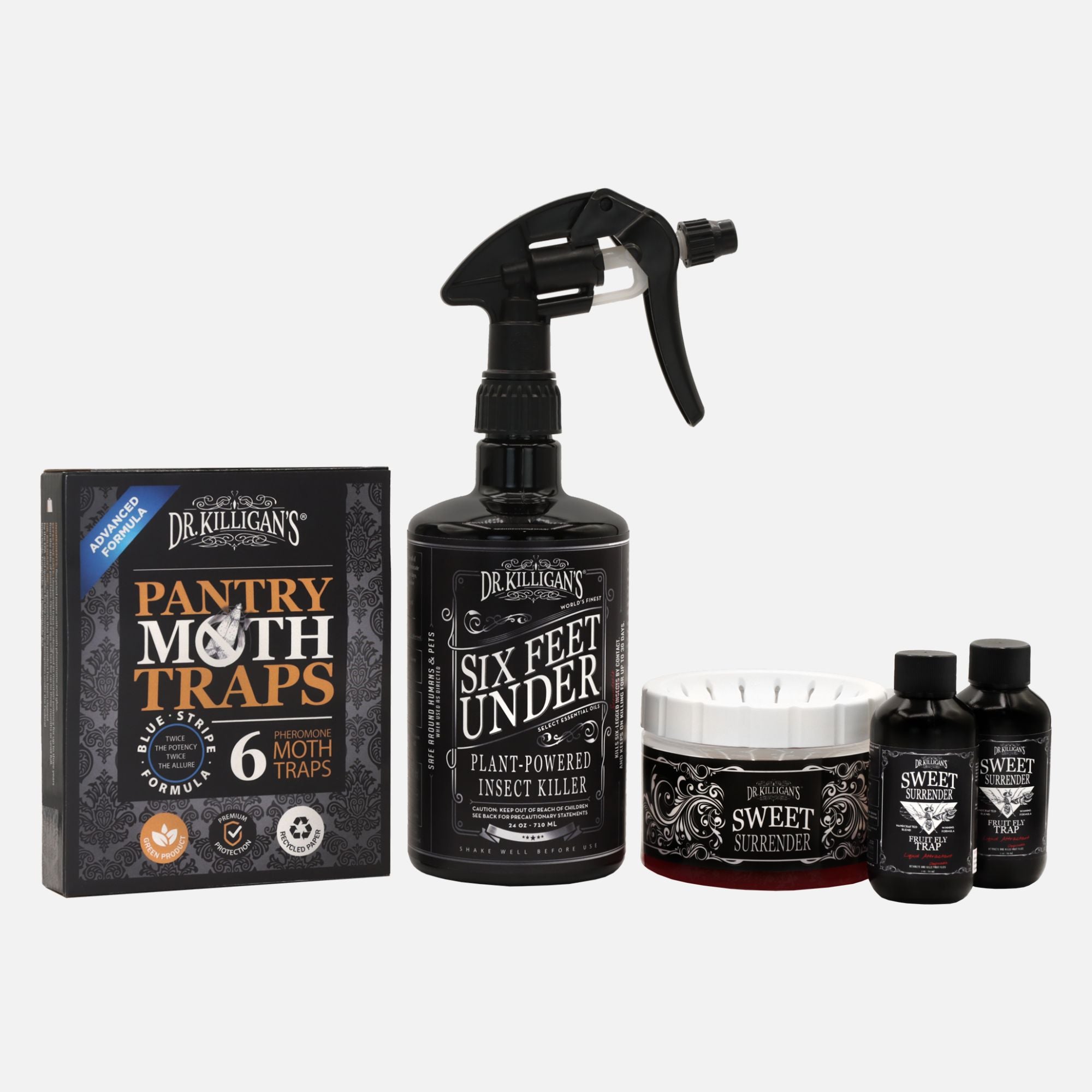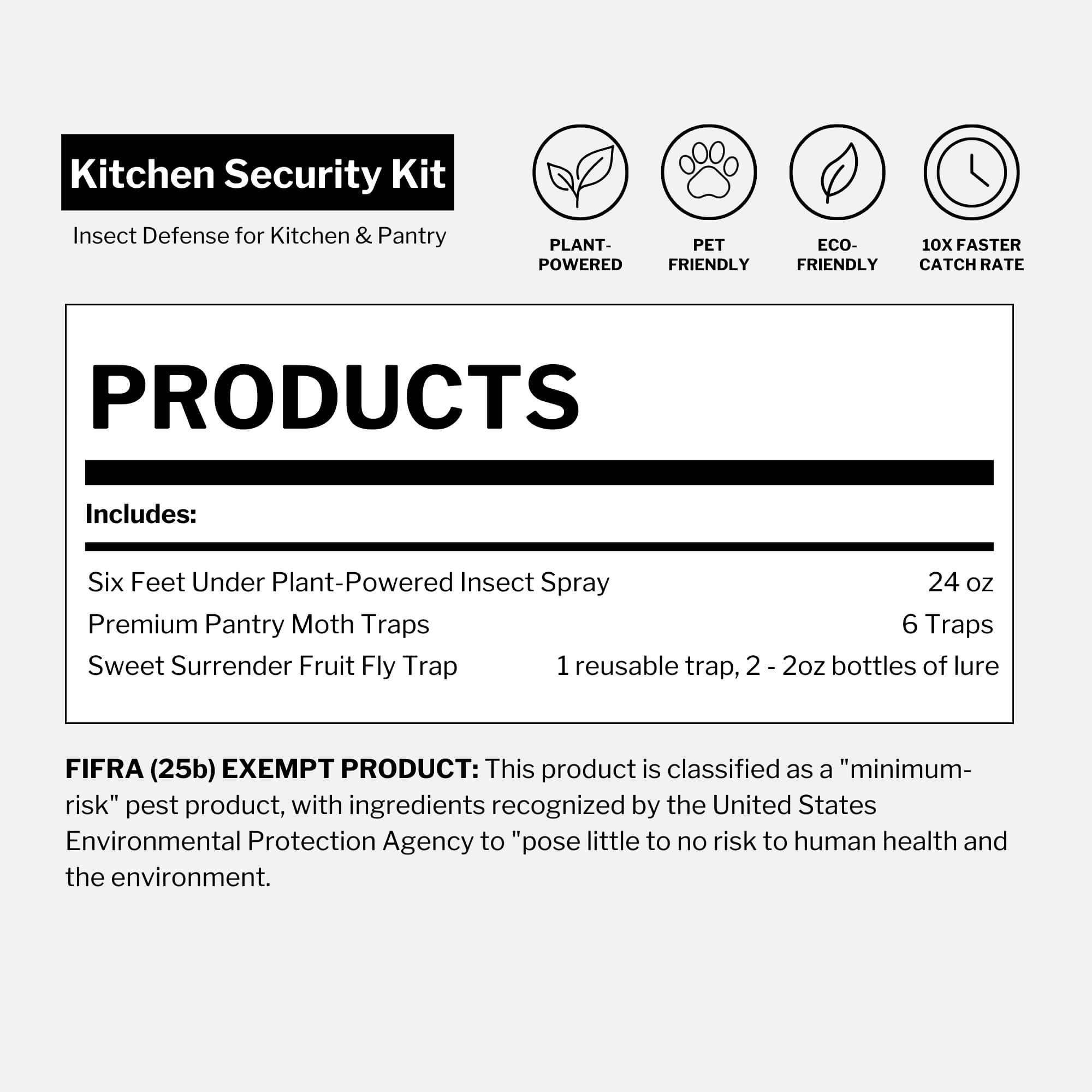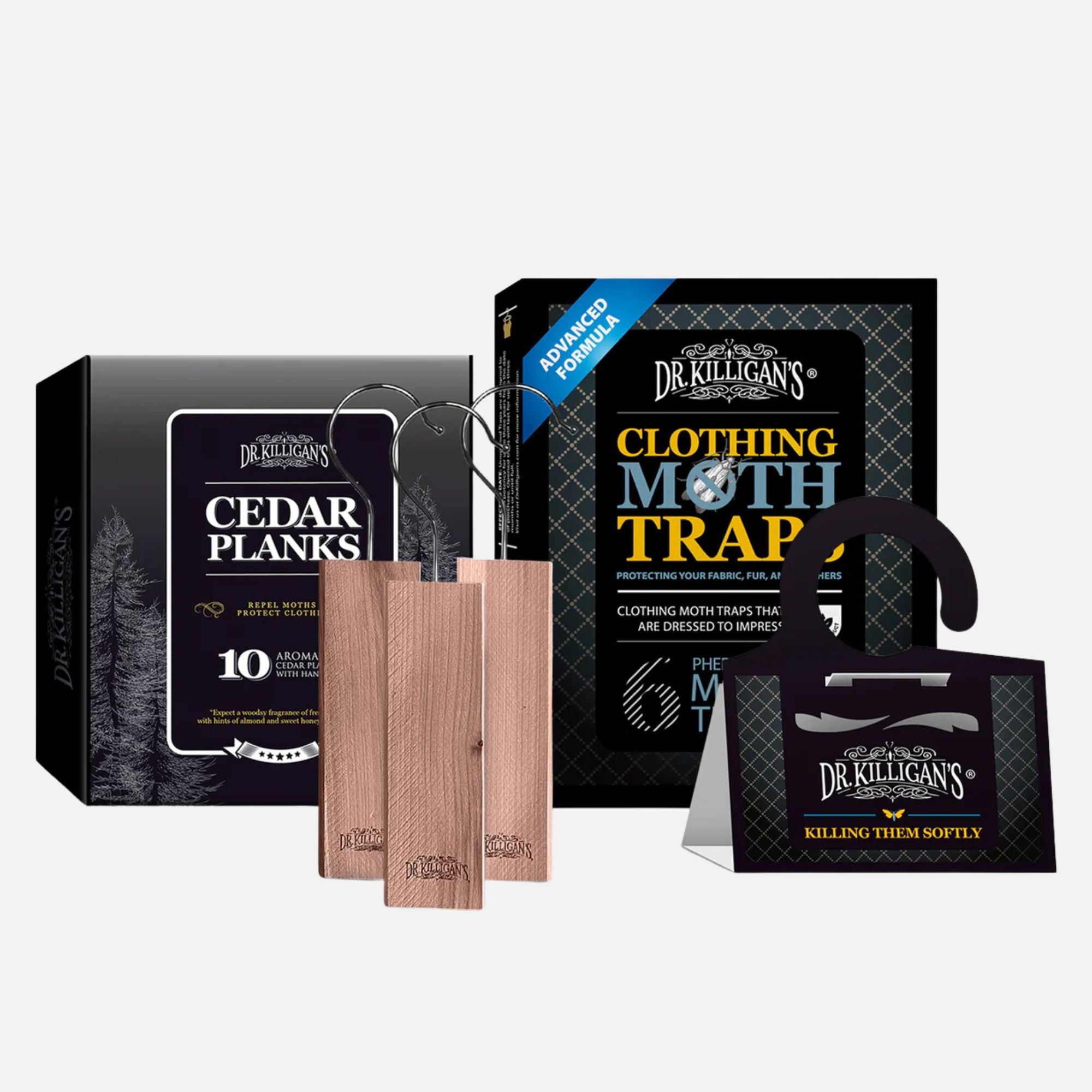Updated on April 3rd, 2025
If you open your pantry one morning to a flutter of wings and find small pantry moths flying around the house, you can be sure of one thing: You have an infestation on your hands.
Tip: If you’re unsure whether the small flying insects are pantry moths, you'll want to learn what pantry moths look like. They are small, grayish-brown moths with a distinctive band across their wings. Learn more in our guide: [Identifying moths in your home 101]
Becoming aware of a pantry moth’s presence may or may not be subtle. You’ll be pouring yourself a bowl of Cheerios and notice that the Os are wiggling or meandering out into your garage to get a handful of seeds for your parakeet and scoop up a trail mix of egg, larvae and seeds (instead of little pellets). Although your beloved parakeet may enjoy the tasty treat, you’ll be left feeling disgusted and nauseous.
If you’ve ever encountered something similar, then you’ve fortuitously brought these little fiends into your beloved home.
Note: These little fiends are actually quite crunchy. Once on a trek, a ragged, toothless man—with his clothes barely holding onto his thin frame, along with a smile of pure sunshine and joy on his dark face—laid one out on the palm of his hand for me. His hands were rough and calloused and his nails were a jumble of cliffs and plains, some having been bitten down and others long, witch-like and curling inwards. As I gaped at the wiggling squirmy opal-colored larvae on his open palm, he abruptly lifted his hand to my face. "Kolya," he said, which is "eat" in Lingala, a Bantu language spoken in the Republic of Congo. With that, I gingerly placed it in my mouth. Its rubbery texture, consistent wiggle and stringy fibrous bite were undeniably unforgettable.
Where do pantry moths come from and how do they get inside?

These pantry bugs got into your home by first infesting dry goods at food processing, food-packaging or food storage facilities worldwide, specifically in grain bins or grain storage buildings.
Then, these goods were shipped to your local grocery store, unboxed, shelved and picked up by you. You unknowingly (and unfortunately) bought a dry good that had already been moth-selected.
While pantry moths usually stick to kitchens and food storage areas, they can sometimes wander into unexpected places, even nearby bedrooms—but more on that later.
What do pantry moths eat? (And what foods do pantry moths like most?)
When asking what do pantry moths eat or what foods do pantry moths like most, you might be better off wondering what they don’t eat, as their appetites are surprisingly extensive.
While many moth species feed on nectar, fabrics or natural fibers, pantry moths specifically target dry foods found in homes.
Do pantry moths eat salt?
Many homeowners wonder if pantry moths eat salt. The good news is, no—they aren’t interested in salt, sugar or other mineral-based ingredients. Pantry moths seek out dry goods rich in starches, proteins and oils.
While they aren't too picky, pantry moths tend to favor certain foods over others. Grains, nuts and dried fruit are among their absolute favorites, as these provide the ideal nutrients for their larvae to thrive. Items like birdseed and dry pet food are also highly attractive, especially when stored for long periods.
Below is a breakdown of the most common — and most tempting — foods pantry moths like to eat:
- Grains: Includes any food made from wheat, rice, oats, cornmeal or barley, such as bread, pasta, couscous, breakfast cereals, biscuits, cake mixes and grits
- Nuts and seeds
- Flour
- Dried fruit
- Dried beans
- Birdseed
- Dry pet food
- Spices and herbs
- Chocolate and cocoa beans
- Candies
- Soup mixes
- Baking chocolate
- Teas
- Coffee and coffee substitutes
- Powdered milk
- Potpourri mixes
- Decorative wreaths that include nuts, fruits and/or seedheads
If you find pantry moths in any of these foods, you’ll likely spot them in their egg or larval stages, hidden deep within their favorite snacks.
Where would I find pantry moth larvae?
Pantry moth larvae, often referred to as waxworms, may travel surprisingly far from their food source to spin a cocoon and enter the pupa stage. This can lead to confusion between pantry moths and clothing moths—not because of how they look, but because of where they hide. Read more in this guide: [Pantry moths vs. clothing moths]
If you have a severe infestation, it’s especially important that you find all the larvae. Some locations, perhaps somewhat obscure, in which you may find larvae include:

- Behind door hinges
- Behind door knobs
- In corners of wire baskets
- Underneath shelves
- Around the edges of jar lids, cans and non-food items
- On other shelves and crevices in your pantry
- In the seams of doorways
- Inside food packages
- Outside of food packages, in folds and behind labels
- In floor or ceiling corners
- In baseboard crevices
- Underneath shelf liners
Tip: If you find moths within cracks in shelving or under baseboards, I recommend caulking or sealing the gaps to trap the moths in. This will restrict access to their food source and prevent an otherwise growing infestation.
If you have fully inspected all locations in and around your pantry and have not unearthed their whereabouts or if you suspect the moths are coming from another area, we recommend checking for other food sources within the house. This includes:
- Your garage, specifically those with stored food items (birdseed or dog food in particular)
- Your closets, especially those close to a food source
- Nearby rooms, such as bedrooms and bedroom closets
Tip: If you suspect that you have pantry moths in your bedroom—which is more common than many realize—inspect where the ceiling and walls meet at ninety-degree angles and around door frames and window trims.
For additional resources:
- Understanding the pantry moth life cycle:Discover each stage—from egg to larvae to adult—and learn how to interrupt the cycle effectively. Read more in this guide: [What is the life cycle of a pantry moth?]
- Eradicating pantry moths: Get a step-by-step walkthrough for eliminating infestations and keeping them from coming back. Explore the guide: [How to get rid of and prevent pantry moths]
- Duration of eradication: Wondering how long it takes to completely eliminate pantry moths? Learn what to expect in our article: [How long does it take to get rid of pantry moths?]



